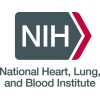Urban African-American Community Hypertension Control
Primary Purpose
Cardiovascular Diseases, Heart Diseases, Hypertension
Status
Completed
Phase
Locations
Study Type
Observational
Intervention
Sponsored by

About this trial
This is an observational trial for Cardiovascular Diseases
Eligibility Criteria
No eligibility criteria
Sites / Locations
Outcomes
Primary Outcome Measures
Secondary Outcome Measures
Full Information
NCT ID
NCT00005706
First Posted
May 25, 2000
Last Updated
February 17, 2016
Sponsor
National Heart, Lung, and Blood Institute (NHLBI)
1. Study Identification
Unique Protocol Identification Number
NCT00005706
Brief Title
Urban African-American Community Hypertension Control
Study Type
Observational
2. Study Status
Record Verification Date
May 2002
Overall Recruitment Status
Completed
Study Start Date
September 1993 (undefined)
Primary Completion Date
undefined (undefined)
Study Completion Date
August 1998 (Actual)
3. Sponsor/Collaborators
Name of the Sponsor
National Heart, Lung, and Blood Institute (NHLBI)
4. Oversight
5. Study Description
Brief Summary
To investigate whether a health education program, developed in partnership with the community and delivered by nurse supervised community health workers (CHWs), lowered high blood pressure (HBP) in inner city African American adults.
Detailed Description
BACKGROUND:
This population based study was significant because it offered a multidisciplinary, community HBP control program to help close the gap in health status for African Americans. The study was conducted in response to a demonstration and education initiative, "Improving Hypertensive Care for Inner City Minorities", which was reviewed and approved by the Clinical Applications and Prevention Advisory Committee in April 1992 and by the National Heart, Lung, and Blood Advisory Council in May 1992. The Request for Applications was released in October 1992.
DESIGN NARRATIVE:
The two and a half year intervention trial sought to extend and test the generalizability of prior work in a similar inner city African American community, which demonstrated the efficacy of planned health education programs that were culturally-sensitive, community-based and owned, and built upon appropriate behavioral and community activation theory and principles, in improving the control of HBP and decreasing related morbidity and mortality.
Five hundred men and 500 women were recruited from households in neighborhood blocks randomly assigned to a more or less intensive educational-behavioral intervention. Both groups received usual medical care, community HBP education, and HBP patient education materials. In addition, the more intensive group received 1) individualized educational counseling sessions with the CHW to increase understanding of HBP and to address barriers to control of HBP; 2) outreach and follow-up to address inadequate health care resources and health behavior related skills through interim monitoring and education "booster" sessions; and 3) mobilization of social support from a family member/friend identified by the participant as the primary source of daily reinforcement.
Statistical analysis focused on BP change in all adults with HBP on randomized blocks whether or not they participated in either of the intervention groups (program effectiveness), as well as BP change in all adults participating in the two interventions regardless of their level of compliance (intervention efficacy). In addition, the analysis focused on differences in the two groups regarding individuals' adherence to HBP lowering recommendations to enter/re-enter care, remain in care, modify lifestyle, and take HBP medication. Multiple regression was done to determine the contribution of the changes in the major independent variables (perceived barriers, use of health care resources and health care skills, and social support) to changes in the outcome and intervening variables which included adherence to HBP lowering recommendations.
The study completion date listed in this record was obtained from the "End Date" entered in the Protocol Registration and Results System (PRS) record.
6. Conditions and Keywords
Primary Disease or Condition Being Studied in the Trial, or the Focus of the Study
Cardiovascular Diseases, Heart Diseases, Hypertension
7. Study Design
10. Eligibility
Sex
Male
Maximum Age & Unit of Time
100 Years
Accepts Healthy Volunteers
No
Eligibility Criteria
No eligibility criteria
12. IPD Sharing Statement
Citations:
PubMed Identifier
10764134
Citation
Bone LR, Hill MN, Stallings R, Gelber AC, Barker A, Baylor I, Harris EC, Zeger SL, Felix-Aaron KL, Clark JM, Levine DM. Community health survey in an urban African-American neighborhood: distribution and correlates of elevated blood pressure. Ethn Dis. 2000 Winter;10(1):87-95.
Results Reference
background
PubMed Identifier
10951950
Citation
Kim MT, Hill MN, Bone LR, Levine DM. Development and testing of the Hill-Bone Compliance to High Blood Pressure Therapy Scale. Prog Cardiovasc Nurs. 2000 Summer;15(3):90-6. doi: 10.1111/j.1751-7117.2000.tb00211.x.
Results Reference
background
PubMed Identifier
11763292
Citation
Clark JM, Bone LR, Stallings R, Gelber AC, Barker A, Zeger S, Hill MN, Levine DM. Obesity and approaches to weight in an urban African-American community. Ethn Dis. 2001 Fall;11(4):676-86.
Results Reference
background
PubMed Identifier
10360339
Citation
Gelber AC, Wigley FM, Stallings RY, Bone LR, Barker AV, Baylor I, Harris CW, Hill MN, Zeger SL, Levine DM. Symptoms of Raynaud's phenomenon in an inner-city African-American community: prevalence and self-reported cardiovascular comorbidity. J Clin Epidemiol. 1999 May;52(5):441-6. doi: 10.1016/s0895-4356(99)00015-3.
Results Reference
background
Learn more about this trial

Urban African-American Community Hypertension Control
We'll reach out to this number within 24 hrs